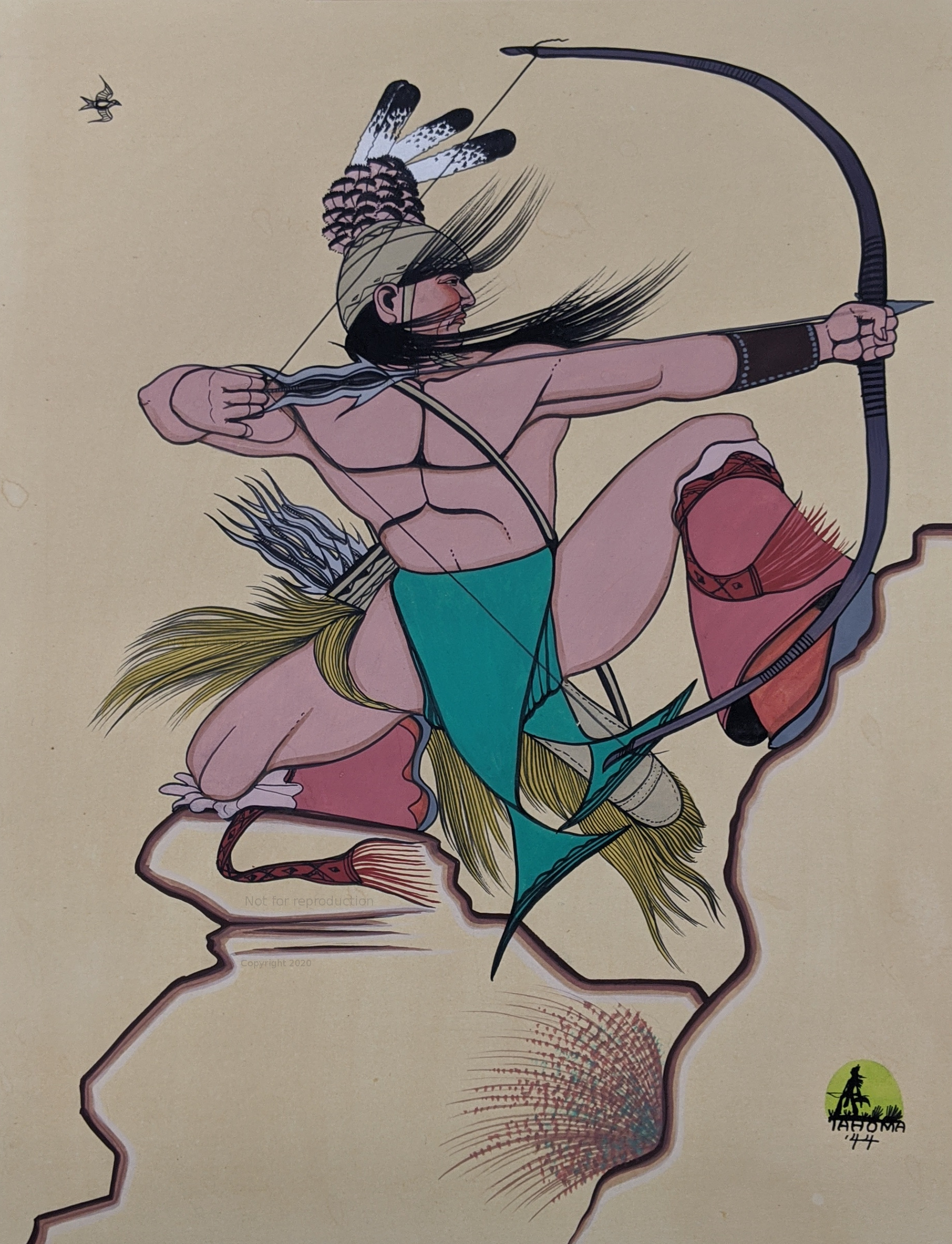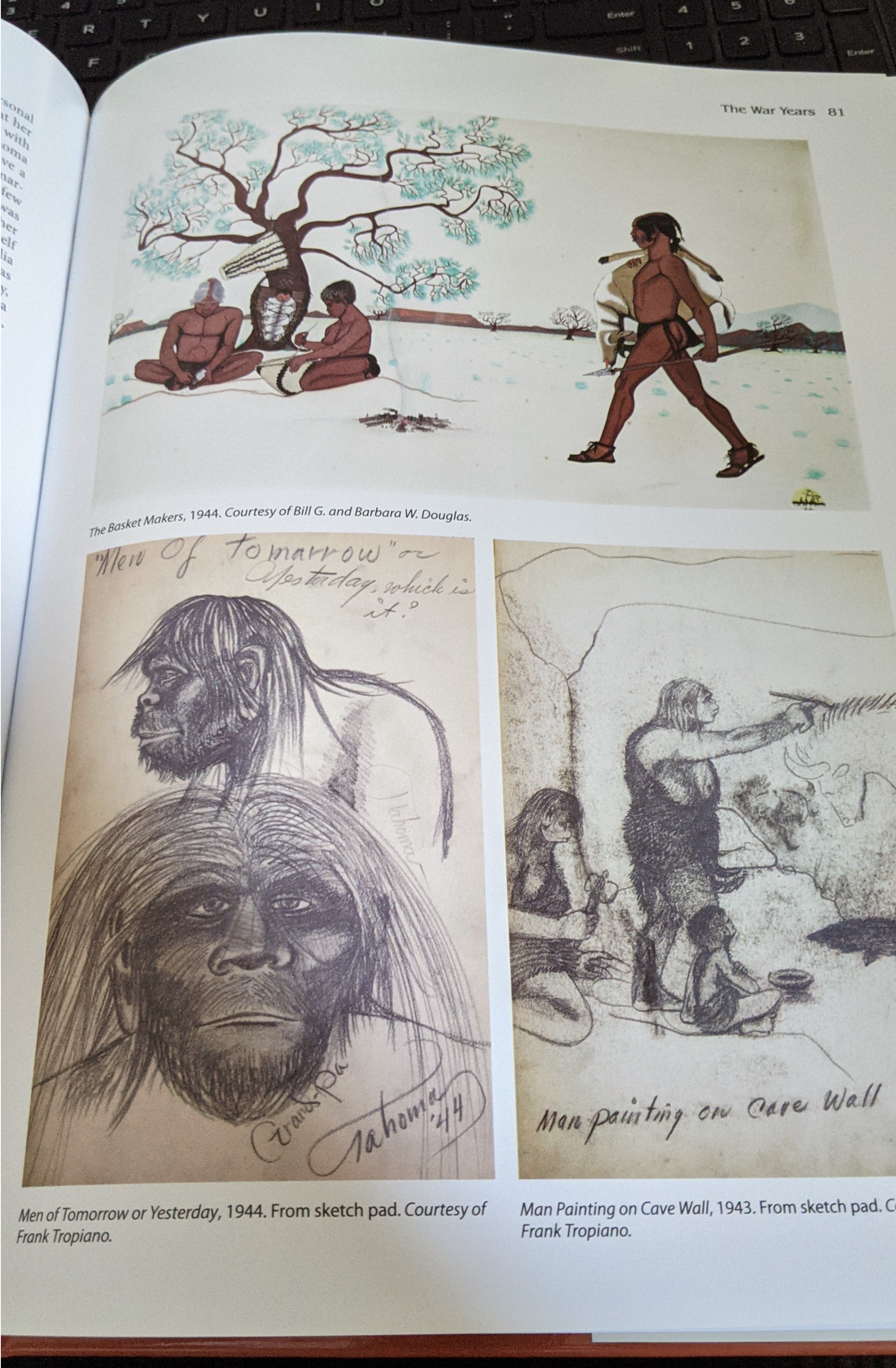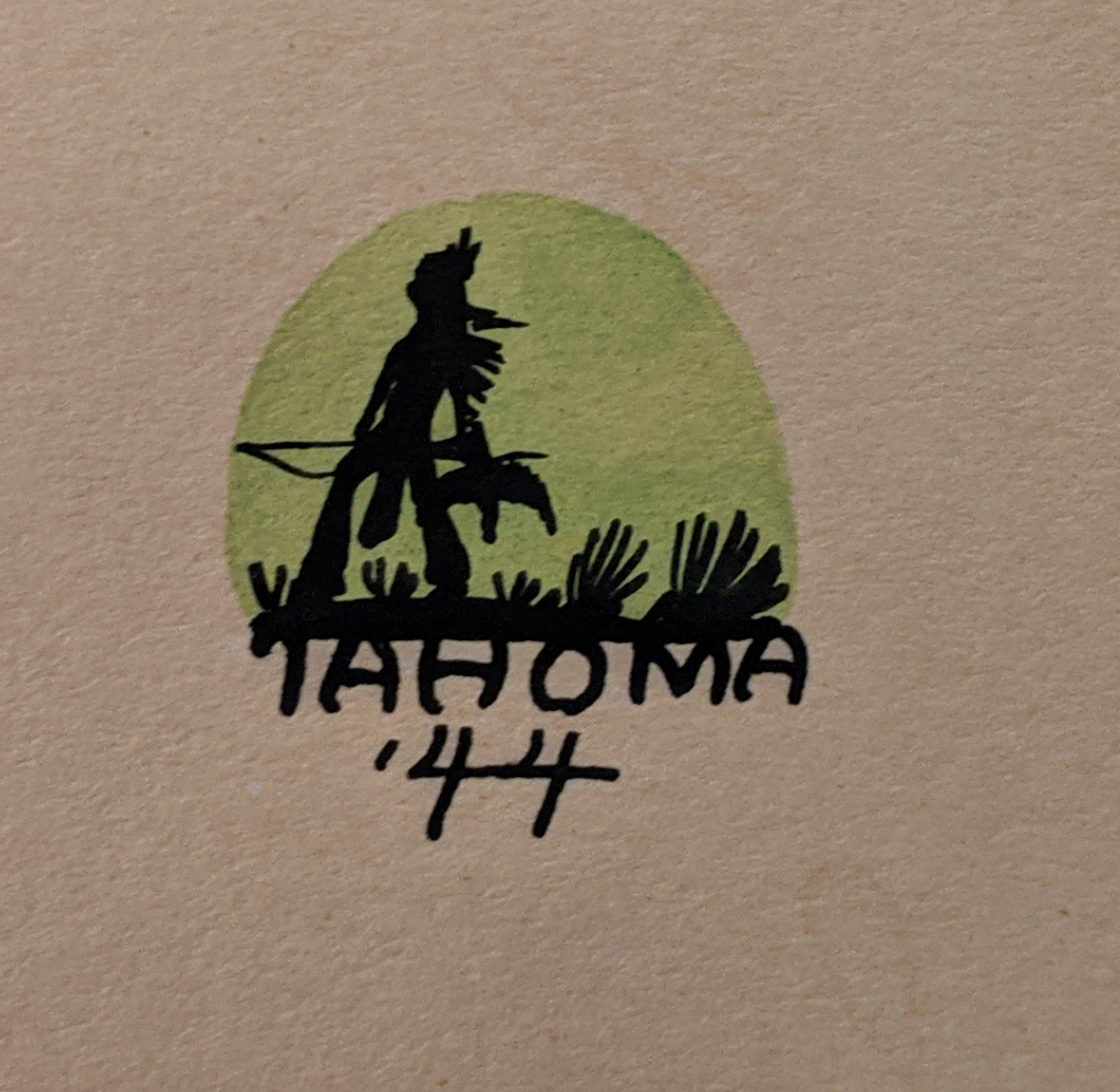The Archer by Quincy Tahoma

Quincy Tahoma painted The Archer in 1944. He was 27 years old, but the government thought he was 24, and he was happy to go along with the deception. He liked being the young Navajo artist whose talent couldn't be kept on the reservation. But he was living multiple lives, and that became obvious in 1944.
Tahoma wanted to fight in the war, but a childhood injury that severely limited the use of his left arm prevented him from doing so. As a native speaker of the Navajo language, the government thought he could be useful in intelligence work, and called him up in 1943, but they soon sent him home for reasons that remain unclear. So in 1944 he disseminated several conflicting stories about his war service.
Tahoma was accustomed to leading a double life. As a student at the Santa Fe Indian School he always had one foot in his native Navajo culture, and one foot in white America. After his father died, he was raised partly by an aunt, and partly by several boarding schools that taught Native Americans to integrate into white society. He found art through an incredibly influential teacher named Dorothy Dunn. As an artist, Tahoma relied on white America for his income. Tourists flocked to New Mexico to see and experience Native American culture while they could. Tahoma was happy to paint the pictures that they wanted to see, pictures of a proud native heritage that mixed cultures and drew on all of his life experience.
In 1944 he was the darling of the New Mexico art scene. He was featured in a short film, and he worked for the Museum of New Mexico, painting scenes of early humans.

The Archer shows off Tahoma's confidence, but it also reveals his immaturity. It shows a confident, clear-eyed hunter who bags his prey, as we can see in the cartouche. But the composition is flat and one dimensional, lacking the drama of his best paintings. Also, Tahoma mistakes the musculature of the archer's right knee.
Still, it reveals some of the techniques that made Tahoma famous. The sequential art in the cartouche is exquisite. The mixture of inking and painting techniques lends the painting an illustrative quality. The bird in the upper left defines the frame as in so many Tahomas. And the characteristic blue-green of the archer's loin cloth is still as brilliant as the day it was painted.

The Archer isn't the best painting by Quincy Tahoma, but it displays a blossoming talent. It reveals a young artist who has yet to face alcoholism, and who hasn't yet reckoned with the consequences of his double lives.
